|
Academy
|
www.onthewaymodels.com |
WWII Ground Vehicle Set #4: U.S. Ambulance & Tow Truck |
|||
| Kit #: 13403 |
Review by
- Al Magnus
|
||||
|
Academy
|
www.onthewaymodels.com |
WWII Ground Vehicle Set #4: U.S. Ambulance & Tow Truck |
|||
| Kit #: 13403 |
Review by
- Al Magnus
|
||||
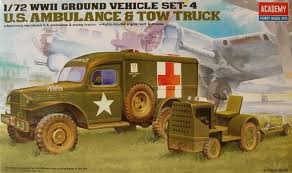 |
|
The first Clark Clarktor 6 tow tractor was introduced in 1927, designed specifically to pull airplanes and warehouse trailer trains, remained in production until 1987.
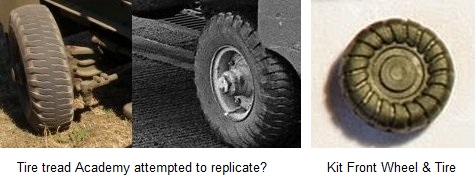
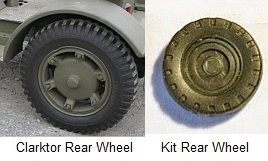
Both the front and rear tires, along with their associated wheels, are atrocious. The rear wheels are featureless and lack the prominent spokes seen on wartime Clarktors, while the front wheels lack the recessed disc. The rear tires have next to no tread, and what tread they possess is not accurate. But they are at least somewhat palatable compared to the front tires. The front wheels exhibit more tread than the rears, but this tread unfortunately looks more like a rolled up millipede than a proper tread. My best guess is that Academy tried to replicate the tread pattern see on the restored example seen above. 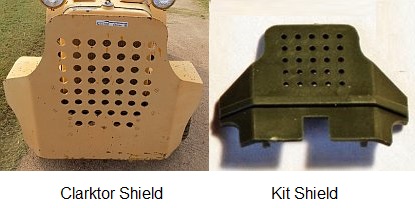
Then there is the inaccurate front shield. The kit has 5 holes per row, whereas the real Clarktor has 7 holes per row, plus the row count is incorrect. Not sure how this error passed through the design stage. The dashboard is suspect. It has too many gauges versus what I've seen in photos of period and restored tractors. Also missing is the prominent can-like structure on the right side of the dash, which I guess may be the engine air cleaner. With that said, what can one do with the Academy Clarktor? Outside of re-manufacturing new wheels and shield, an option is to model it as a civilian machine, where modifications are manifest and there is much more leeway as to what can be done. By cherry picking changes I've seen on the web, and rationalizing them as "this is something plausible that someone, somewhere might have done", I proceeded with my build. Below is a list of my changes:
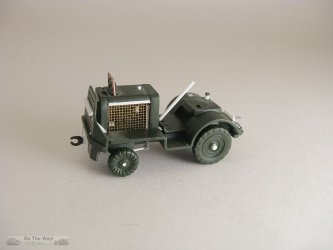


I used this build as an opportunity to test a new technique using "Bondic" - a clear resin that's cured with UV light - to make clear lenses for the headlights and tail light. Following painting, I punched a pair of small discs from a chrome plated sequin and glued them into the headlight openings. To the tail light, which had been previous drilled to make a small hole, I added a drop of gloss red paint, and once everything was dry a drop of "Bondic" was added to all the lights using a toothpick and cured with the enclosed UV light. It worked well enough that I will use it for other builds. Conclusion For those wishing to build a WWII era Clarktor, this kit fails miserably as a replica of those used on airfields during the war. Accuracy issues will force serious modellers to make major modifications, either by scratchbuilding what they need, or finding a suitable third party detail set, or looking for a replacement kit from another manufacturer. References A Google search provides so many photographs and links to Clarktor 6 tractors, both military and civilian, I will only provide a few a few select references below. [1] SVSM (walkaround of restored Clarktor, model year unknown) [2] Maple Leaf Up forum [3] Brief Clark History (pdf file) [4] Purple Wave Auctions [5] docthrock.com [6] Historical photos on Flikr [7] MAPS Air Museum restoration Review sample purchased by the author. 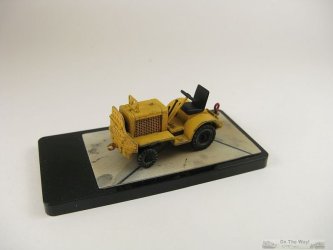
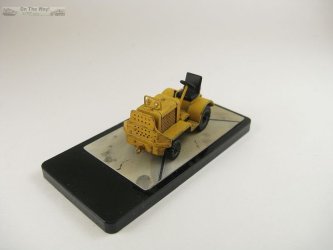
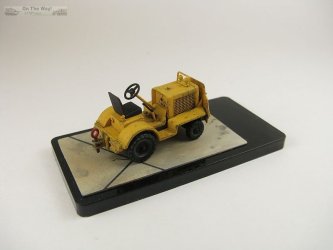
|
| Back to Academy Kit List | Back to Construction Reviews |
Article Last Updated: 23 November 2018 |
Back to Home Page |